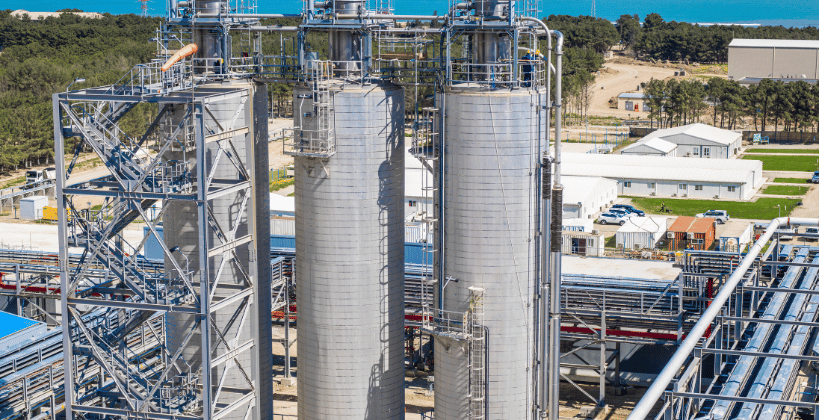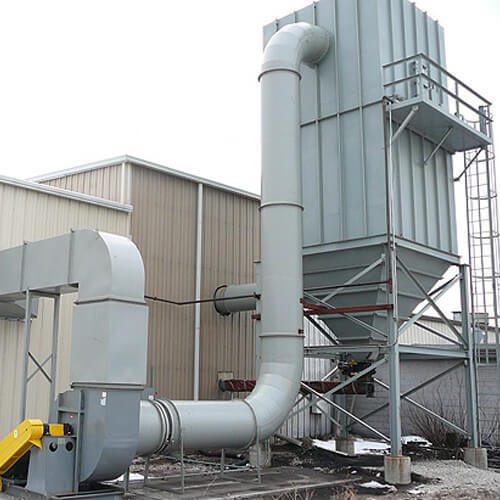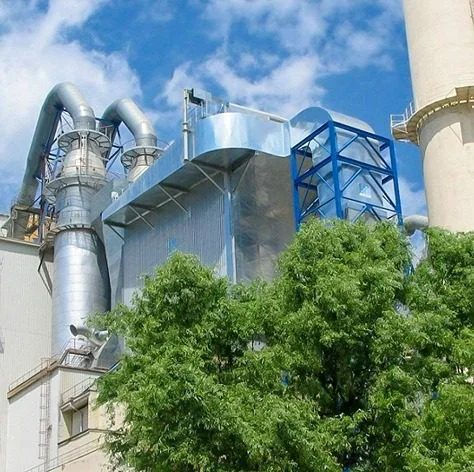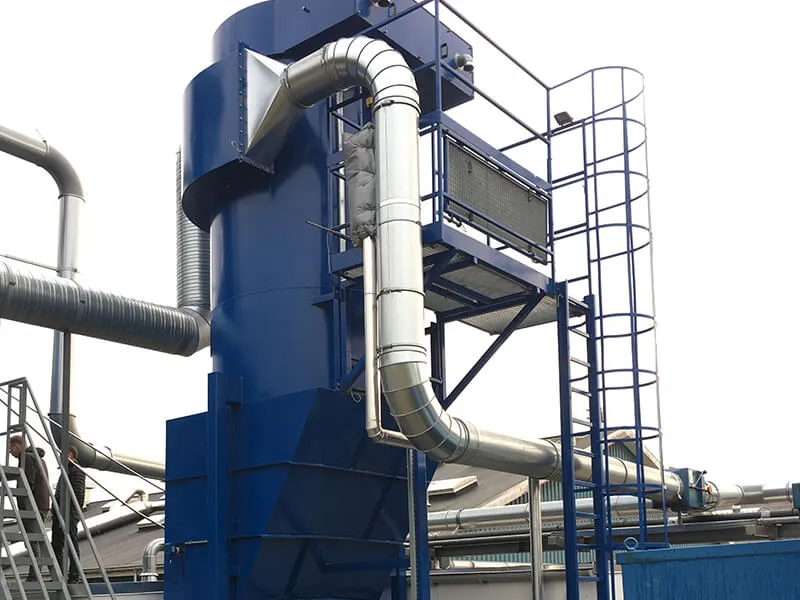In the contemporary industrial landscape, the challenge of managing gaseous emissions is ever-pressing. Various manufacturing and processing sectors release exhaust gases containing harmful pollutants that pose significant threats to human health and the environment. As regulatory bodies implement stricter air quality standards, industries are compelled to adopt efficient gas cleaning systems that not only mitigate pollution but also enhance operational proficiency. Gas cleaning plants—often referred to as gas treatment systems—are advanced solutions specifically engineered to remove contaminants from industrial exhaust gases. These plants are typically customized to meet the unique challenges posed by individual industries and processes while ensuring regulatory compliance.
Understanding Gas Cleaning Plants
Gas cleaning plants represent a convergence of sophisticated technologies aimed at capturing and eliminating pollutants from gas streams generated in various industrial processes. The architecture and operational procedures of these plants differ significantly based on the nature of the emitted gases, concentration levels of pollutants, gas volume, and the desired emission standards.
Why are Gas Cleaning Plants Necessary?
Industrial operations often produce emissions including particulate matter, volatile organic compounds (VOCs), sulfur oxides (SOx), nitrogen oxides (NOx), and other hazardous air pollutants. These emissions can lead to respiratory illnesses, environmental degradation, and contributions to climate change. In response, regulatory frameworks across the globe are growing ever more stringent, obliging industries to reduce their ecological footprint. Therefore, gas cleaning plants are not just a luxury but a necessity for responsible industrial conduct.
Components and Functionality of Gas Cleaning Plants
A typical gas cleaning plant comprises several vital components designed to work synergistically to filter out contaminants effectively:
- Pre-cleaning Systems: This initial stage involves conditioning gas streams for optimal pollutant removal. It may involve cooling, humidifying, or utilizing mechanical separators like cyclones to eliminate larger particulates before the gas enters the main cleaning system.
- Main Gas Cleaning System: This essential component employs various technologies tailored to the types of pollutants present. Through advanced techniques—including electrostatic precipitation, filtration through fabric filters, chemical scrubbing, and adsorption—the plant effectively captures a wide range of harmful substances.
- Post-treatment Solutions: Depending on the specific regulatory demands and operational requirements, further treatment processes may be necessary to ensure that the cleaned gas adheres to required emission limits.
- Emission Monitoring Systems: Continuous monitoring is crucial. Advanced sensors and data analytics are deployed to continually assess pollutant levels in the cleaned gases, ensuring ongoing compliance with regulations and detecting any operational inconsistencies.

Gas Cleaning Technologies
The effectiveness of gas cleaning plants hinges on the selection of suitable cleaning technologies based on several factors, including the types of pollutants, the temperature of the gas, humidity levels, particle size, and the precision of desired emission standards. Below are some prominent gas cleaning technologies:
- Electrostatic Precipitators (ESPs): Utilizing an electric field, ESPs charge airborne particles, making them adhere to collection plates. This technology is particularly effective for removing fine particulates from gas streams.
- Fabric Filters (Bag Filters): Wangling dirt particles through fabric, these systems have gained prominence for their extraordinary efficiency in collecting fine dust. They are advantageous in sectors like cement production, where high dust concentrations are typical.
- Scrubbers: Utilized extensively in industrial applications, scrubbers introduce a liquid medium that dissolves or chemically reacts with gaseous pollutants. Wet scrubbing technologies, such as venturi scrubbers or packed tower scrubbers, are particularly effective for SOx and VOCs.
- Adsorption Systems: These employ solid materials that capture gaseous pollutants. The use of activated carbon as an adsorbent is commonplace, particularly in sectors generating significant organic emissions.
- Thermal Oxidizers: Such systems combust organic pollutants at high temperatures to break them down into less harmful substances, essentially serving as a detoxification mechanism for VOCs.
- Catalytic Oxidizers: Operating similarly to thermal oxidizers but with a catalyst, this technology allows for oxidation reactions to occur at lower temperatures, thereby conserving energy.
Benefits of Gas Cleaning Plants
Investing in gas cleaning technologies provides numerous benefits ranging from environmental protection to operational efficiencies:
- Environmental Protection: By significantly reducing air pollutants, gas cleaning plants contribute substantially to improved public health and environmental conservation.
- Regulatory Compliance: Meeting stringent emission standards can avert severe punitive measures from regulatory agencies, fostering sustainable business practices.
- Enhanced Product Quality: Removal of impurities in gaseous emissions can prevent product contamination and enhance the overall quality and consistency of industrial outputs.
- Energy Recovery: Certain gas cleaning technologies allow for the recovery of energy from waste heat or other processes, promoting efficiency and further reducing operational costs.
- Cost Savings: By safeguarding equipment against erosive pollutants and cutting down maintenance expenses, gas cleaning plants yield substantial long-term financial benefits.
Customization and Flexibility
A crucial selling point for gas cleaning plants is their inherent capacity for customization. Each industrial process generates a distinctive gas profile characterized by variable contaminants, concentrations, flow rates, and operational conditions.
Factors Influencing Customization
- Gas Composition: Identification of the specific contaminants and their concentrations is paramount. A one-size-fits-all approach would likely lead to inefficient filtration and regulatory non-compliance.
- Flow Rate: Predicting the flow rate of exhaust gases can directly influence the selected technology and design specifications of the gas cleaning system.
- Temperature and Pressure: The thermal profile of the gas will dictate the type of materials used in the system, as certain pollutants require specific handling based on their physical state at various temperatures.
- Industry-Specific Requirements: Different industries have distinct needs. For instance, the food processing sector may have stricter requirements regarding emissions compared to heavy manufacturing.
Gas Cleaning Plant Applications
Cement Industry
The cement manufacturing sector is notorious for generating substantial dust emissions comprising silica and other particulate matter. A typical gas cleaning plant for cement involves the use of fabric filters or electrostatic precipitators, enabling the capture of dust particles before they are emitted into the atmosphere. A carefully designed gas cleaning system can achieve particulate removal efficiencies exceeding 99%, thereby safeguarding both human health and air quality.
Power Plants
Power generation facilities emit a diverse array of pollutants, including particulate matter, sulfur oxides, and nitrogen oxides. These plants typically incorporate a multi-pronged approach by integrating electrostatic precipitators, wet scrubbers, and selective catalytic reduction (SCR) systems. This combination ensures comprehensive pollutant removal while enhancing energy efficiency. Notably, the integration of technologies tailored to capture specific contaminants leads to a drastic reduction in harmful emissions.
Chemical Manufacturing
The chemical industry presents unique challenges due to the wide variety of gases produced, often containing hazardous air pollutants, VOCs, and reactive chemical species. Tailored gas cleaning systems can be developed to target the specific pollutants discharged during manufacturing processes. For example, acid gas scrubbing can be implemented to remove harmful sulfuric or hydrochloric acid vapors, while adsorption systems with activated carbon can specifically target organic compounds.
Discover Our Range of Solutions:
The Future of Gas Cleaning Technologies
As industries become increasingly aware of their environmental responsibilities, the future of gas cleaning plants is optimistic. Continuous advancements in technology are steering the industry towards solutions that are not only efficient but also sustainable. Emerging trends such as machine learning and artificial intelligence promise to optimize operation and maintenance strategies, enabling real-time decision-making based on analytics generated from emission monitoring systems.
Focus on Sustainability
A growing trend is the emphasis on sustainability in the design and operation of gas cleaning systems. Manufacturers are investing in eco-friendly technologies that minimize waste production and maximize energy recovery. This shift reflects an industry-wide commitment to achieving a balance between productivity and environmental stewardship.







